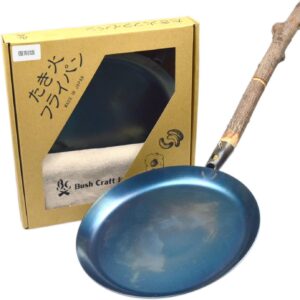Bushcraft Gear
-
Sale!
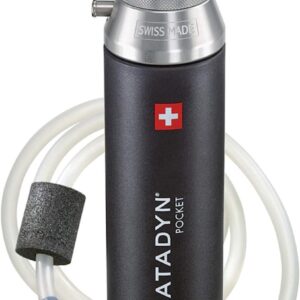
Pocket Water Filter
Original price was: $310.00.$298.00Current price is: $298.00. -
Sale!
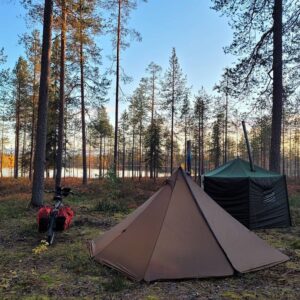
Teepee Tent with Stove Jack: 4 Season
Original price was: $250.00.$229.00Current price is: $229.00. -
Sale!
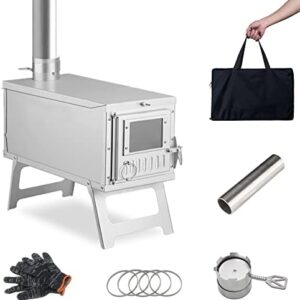
Portable Wood Burning Stove
Original price was: $180.00.$169.99Current price is: $169.99. -
Sale!

Skachet Axe
Original price was: $95.00.$80.00Current price is: $80.00. -
Sale!
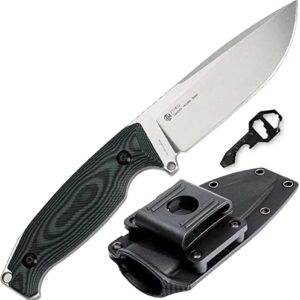
Ruike Camping Small Fixed Blade Knife with Sheath 360 Rotate, 14c28n Tactical Full-tang Large Big Stainless Steel,Hunting Survival Bushcraft Top Hiking Tool,Men EDC Outdoor Belt Hidden Horizontal Case Sports & Outdoors
Original price was: $85.00.$80.00Current price is: $80.00. -
Sale!
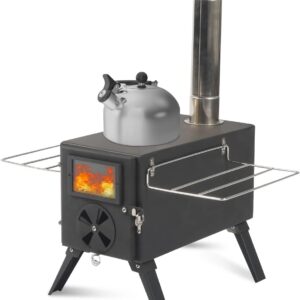
Camping Wood Stove – Portable Outdoor Tent Stove
Original price was: $105.00.$79.00Current price is: $79.00. -
Sale!
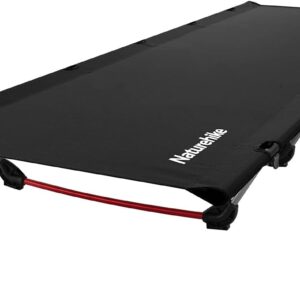
Ultralight Folding Backpacking Cot
Original price was: $75.00.$69.00Current price is: $69.00. -
Sale!
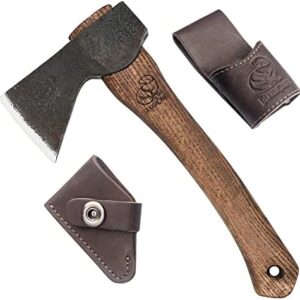
Bushcraft Hatchet / Axe Camping Small Axe with Wood Handle – Wooden Axe Survival Hatchet
Original price was: $75.00.$69.00Current price is: $69.00. -
Sale!
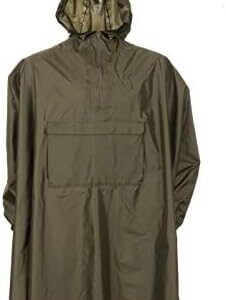
Rain Poncho, Waterproof, One Size, Lightweight
Original price was: $80.00.$60.00Current price is: $60.00. -
Sale!
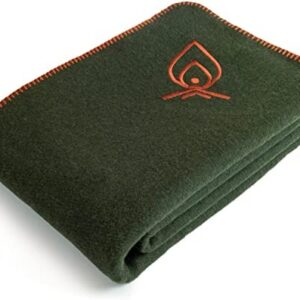
Bushcraft Wool Blanket
Original price was: $66.00.$50.00Current price is: $50.00. -
Sale!
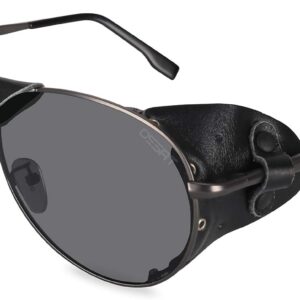
Mountaineering Sunglasses Polarized
Original price was: $60.00.$49.00Current price is: $49.00. -
Sale!

Bushcraft Camping Axe (Hand Forged-High Quality-All Purpose Axe)
Original price was: $56.00.$45.00Current price is: $45.00. -
Sale!
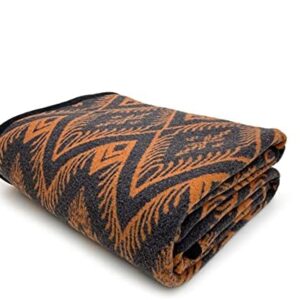
PuTian Merino Wool Blanket – 63″ x 51″ Bohemia Orange Great for Camping, Outdoors, Sporting Events, Survival & Emergency Kits -Super Soft Wool Blanket Sports & Outdoors
Original price was: $50.00.$43.39Current price is: $43.39. -
Sale!
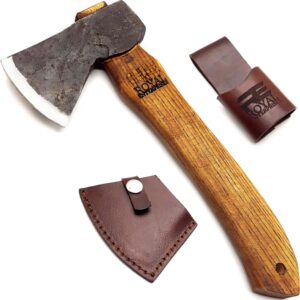
Bushcraft Hatchet
Original price was: $55.00.$43.00Current price is: $43.00. -
Sale!
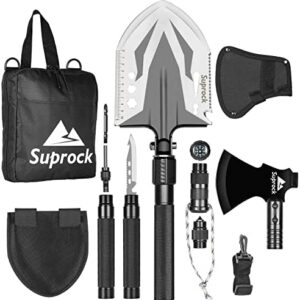
Survival Shovel Multi Tool – Tactical Shovel {2023 Best Deal}
Original price was: $65.00.$43.00Current price is: $43.00. -
Sale!

Bushcraft Knife
Original price was: $55.00.$42.00Current price is: $42.00. -
Sale!

BeaverCraft Bushcraft Knife for Men & Women BSH4 Camping Knife Survival Fixed Blade Knife with Sheath Full Tang Knife Carbon Steel Camp Knife Bush Knife with Sheath for Belt, Camping Knives & Tools Sports & Outdoors
Original price was: $55.00.$39.00Current price is: $39.00. -
Sale!
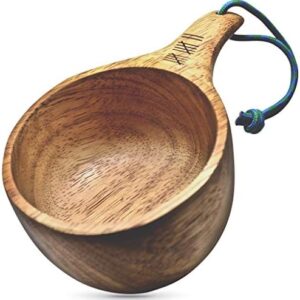
Bushcraft Mug: überleben Dursten Lore Kuska
Original price was: $35.00.$33.00Current price is: $33.00. -
Sale!

Handcarved Wooden Kuksa Cup
Original price was: $35.00.$32.00Current price is: $32.00. -
Sale!
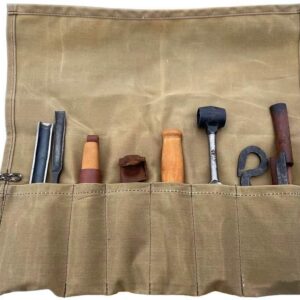
Bushcraft Tool Roll – Waxed Canvas Tool Pouch {2023 Best Deals}
Original price was: $35.00.$30.00Current price is: $30.00. -
Sale!
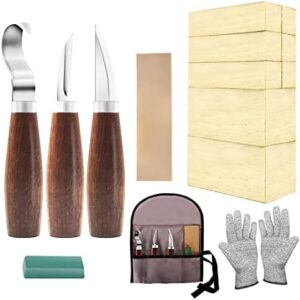
Wood Whittling Kit with Basswood Wood Blocks Gifts Set for Adults and Kids Beginners, Wood Carving Kit Set Includes 3pcs Wood Carving Knife & 8pcs Blocks & Gloves for Widdling Kit Arts, Crafts & Sewing
Original price was: $35.00.$29.00Current price is: $29.00. -
Sale!
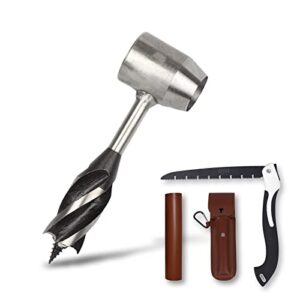
Hand Drill Auger: With Folding Saw {2023 Best Deal}
Original price was: $32.00.$25.00Current price is: $25.00. -
Sale!

Bushcraft Wood Mug- Kuksa Mug {2024 Best Deal}
Original price was: $30.00.$24.00Current price is: $24.00. -
Sale!
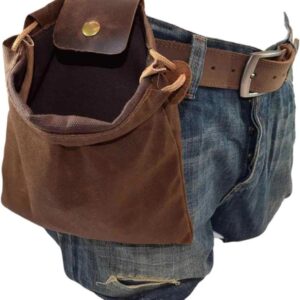
Foraging Bag Waxed Canvas {2023 Best Deal}
Original price was: $25.00.$21.00Current price is: $21.00. -
Sale!

World’s Toughest Ultralight Survival Tent • 2 Person Mylar Emergency Shelter Tube Tent + Paracord • Year-Round All Weather Protection For Hiking, Camping, & Outdoor Survival Kits (Army Green) Sports & Outdoors
Original price was: $23.00.$20.00Current price is: $20.00. -
Sale!

The Pathfinder School Durable Rip-Stop Waxed Canvas Single Strap Hiking Pack Gathering Bag Haversack, Brown Toys & Games
Original price was: $23.00.$19.00Current price is: $19.00. -
Sale!
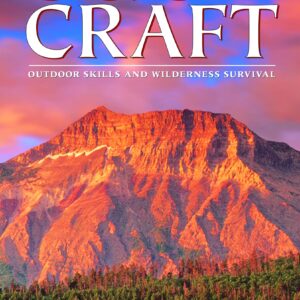
Bushcraft Outdoor Skills and Wilderness Survival Kochanski, Mors: 9781772130072: : Books
Original price was: $23.00.$19.00Current price is: $19.00. -
Sale!
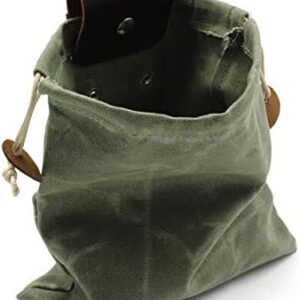
Foraging Bag
Original price was: $23.00.$18.00Current price is: $18.00. -
Sale!
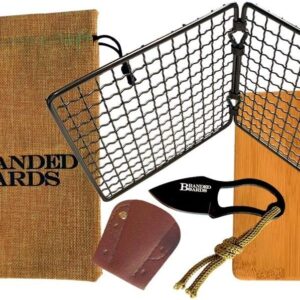
Branded Boards Portable Bushcraft Stainless BBQ Folding Cooking Grill Grate, Bamboo Cutting Board, Burlap Bag, Mini Knife. Camping, Campfires, Backpacking, Hunting & Fishing. (Folding Grill Kit) Sports & Outdoors
Original price was: $23.00.$18.00Current price is: $18.00. -
Sale!
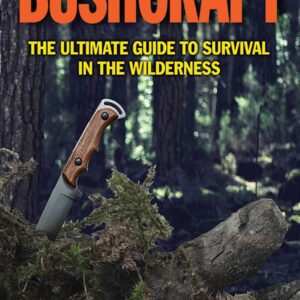
Bushcraft The Ultimate Guide to Survival in the Wilderness
Original price was: $23.00.$17.00Current price is: $17.00. -
Sale!
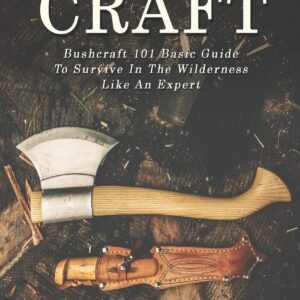
BUSHCRAFT Bushcraft 101 Basic Guide To Survive In The Wilderness Like An Expert!
Original price was: $23.00.$17.00Current price is: $17.00. -
Sale!

How to Camp in the Woods: A Complete Guide to Finding, Outfitting, and Enjoying Your Adventure in the Great Outdoors
Original price was: $20.00.$17.00Current price is: $17.00. -
Sale!
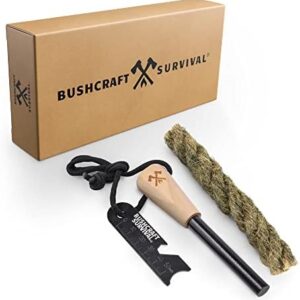
Bushcraft Survival Gear Ferro Rod Fire Starter | Flint and Steel Campfire Starter Kit w/Tinder Rope | Waterproof Magnesium Firestarter Tool For Camping and Backpacking Sports & Outdoors
Original price was: $20.00.$17.00Current price is: $17.00. -
Sale!

Camp fire Tripod
Original price was: $19.00.$16.00Current price is: $16.00. -
Sale!
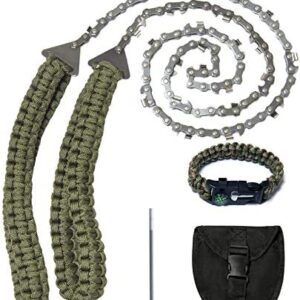
Pocket Chainsaw {2023 Best Deal Survival Saw}
Original price was: $23.00.$16.00Current price is: $16.00. -
Sale!

Texas Bushcraft Fire Starter – 3/8″ Thick Ferro Rod with Striker and Paracord Wrist Lanyard – Waterproof Flint Fire Steel Survival Lighter for Your Camping, Hiking and Backpacking Gear Sports & Outdoors
Original price was: $24.00.$16.00Current price is: $16.00. -
Sale!
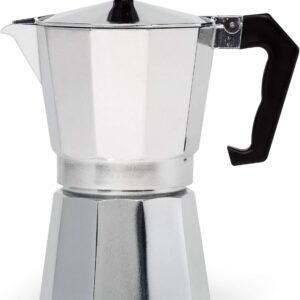
Stovetop Espresso Coffee Maker: Classic – traditional: Camping-bushcraft-travel espresso
Original price was: $20.00.$15.00Current price is: $15.00. -
Sale!
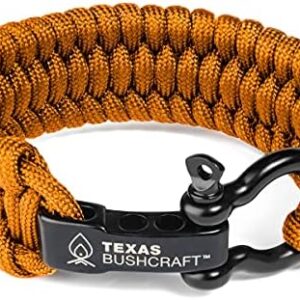
Texas Bushcraft Firecraft Cord Survival Bracelet – Paracord Bracelet with Bow Shackle for Camping and Emergency – 3 Extra Strands Include Wax Thread, Tinder, and Fishing Line Sports & Outdoors
Original price was: $23.00.$15.00Current price is: $15.00. -
Sale!

Backpacking Folding Wood Stove
Original price was: $19.00.$14.00Current price is: $14.00. -
Sale!
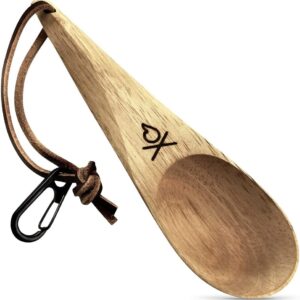
Überleben Dursten Kanu Spoon – Handcrafted Wooden Camping Utensil – 100% Natural Hardwood with Micro Carabiner & Leather Lanyard – Traditional Nordic Wood Design – Lightweight & Durable Sports & Outdoors
Original price was: $20.00.$14.00Current price is: $14.00. -
Sale!
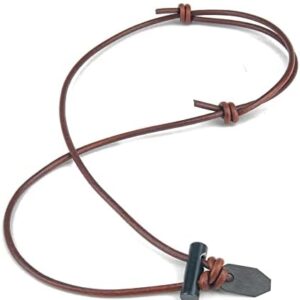
Fire Starter Necklace
Original price was: $15.00.$13.00Current price is: $13.00. -
Sale!
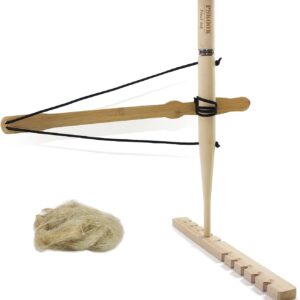
Bow Drill Fire Starter Kit: Friction Fire Starter {2023 Top Pick}
Original price was: $15.00.$13.00Current price is: $13.00. -
Sale!
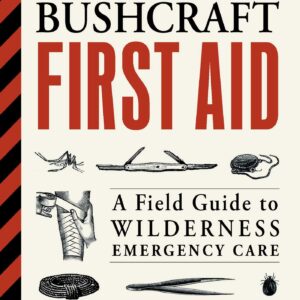
Bushcraft First Aid A Field Guide to Wilderness Emergency Care Canterbury, Dave, Hunt, Ph.D. Jason A.: 9781507202340: : Books
Original price was: $15.00.$13.00Current price is: $13.00. -
Sale!
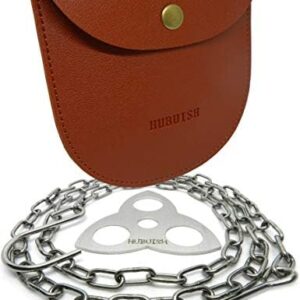
Camping Tripod Board Accessories – Turn Branches into Campfire Tripod for Cooking, Portable Camping Gear and Equipment for Camper/Hiker Travel Outdoor Firepit Hang Pot Cooking (Dark Brown) Sports & Outdoors
Original price was: $15.00.$11.00Current price is: $11.00. -
Sale!
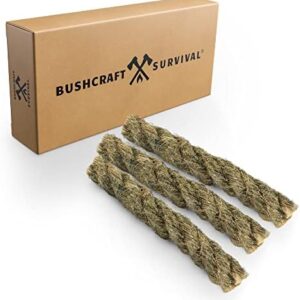
Bushcraft Survival Jumbo Tinder Fire Starter Rope | 3 Pack Extra Large Natural Waterproof Kindling for Campfires | Wax Infused Cords for Camping, Hiking & Backpacking | Bushcraft Survival Tools Everything Else
Original price was: $13.00.$11.00Current price is: $11.00. -
Sale!
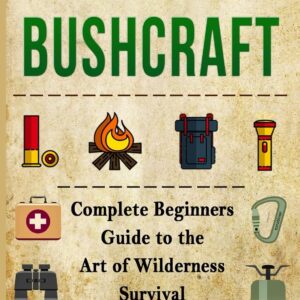
Bushcraft Bushcraft Complete Begginers Guide To The Art Of Wilderness Survival (Trapping,Gathering,Cooking,Camping) Taylor, Neil: 9781543214246: : Books
Original price was: $15.00.$10.00Current price is: $10.00. -
Sale!

Advanced Bushcraft An Expert Field Guide to the Art of Wilderness Survival Canterbury, Dave: 9781440587962: : Books
Original price was: $15.00.$10.00Current price is: $10.00. -
Sale!
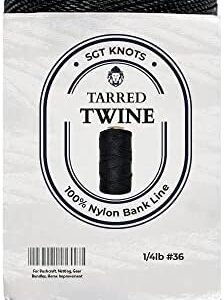
Bushcraft Twine
Original price was: $11.00.$9.00Current price is: $9.00. -
Sale!

The Useful Knots Book
Original price was: $10.00.$8.00Current price is: $8.00.
Bushcraft Gear: The Essential Tools for Wilderness Survival and Thriving in Nature
In an age where technology dominates our lives, there’s a growing yearning to reconnect with nature and return to our ancestral roots. Bushcraft, the art of wilderness survival and thriving in the natural environment, has seen a resurgence in recent years. Central to this practice is the use of specialized gear that aids in self-reliance, resourcefulness, and resilience in the great outdoors. In this blog, we will explore the essential bushcraft gear that every outdoor enthusiast should consider for their wilderness adventures.
1. Bushcraft Knives
A bushcraft knife is a quintessential tool for any outdoor enthusiast. Unlike regular knives, bushcraft knives are designed to withstand the rigors of survival tasks, such as chopping wood, preparing food, building shelters, and creating fire-making tinder. The ideal bushcraft knife has a fixed blade, which offers more durability and stability for heavy-duty tasks.
When choosing a bushcraft knife, look for one with a blade length between 4 to 6 inches, a full tang construction for added strength, and high-quality steel that holds a sharp edge. Additionally, consider the handle material, as it should provide a comfortable grip even in wet conditions.
2. Fire-starting Equipment
Fire is one of the most critical elements in bushcraft. It provides warmth, protection, the ability to cook food, and a sense of comfort in the wilderness. Therefore, carrying reliable fire-starting equipment is essential. Common fire-starting tools include:
– Ferrocerium Rod: This rod creates sparks when struck with a sharp edge, enabling you to ignite dry tinder and start a fire even in adverse weather conditions.
– Waterproof Matches: Traditional waterproof matches are a reliable backup for fire-starting. Ensure they are stored in a waterproof container.
– Lighters: Waterproof and windproof lighters provide a convenient and efficient way to start fires.
– Fire-starting Tinder: Pack some easily ignitable tinder, such as cotton balls soaked in petroleum jelly or commercial fire-starting cubes.
3. Shelter Building Equipment
In the wild, shelter is vital for protection against the elements and maintaining body temperature. Depending on the environment and the materials available, bushcraft enthusiasts often construct temporary shelters using natural resources. However, carrying some lightweight shelter-building equipment is advisable:
– Tarp: A durable and versatile tarp can be fashioned into various shelter configurations, providing protection from rain, wind, and sun.
– Hammock: A hammock with an insect net can serve as both a comfortable sleeping option and protection from biting insects.
– Paracord or Rope: Strong, lightweight cordage is essential for securing your shelter and other gear.
– Compact Sleeping Bag or Bivvy Bag: These provide extra insulation and protect against cold and dampness, particularly in unpredictable weather.
4. Water Purification System
Access to clean water is paramount in any survival situation. While drinking directly from natural water sources may seem tempting, it poses a significant risk of waterborne illnesses. A reliable water purification system is crucial. Consider the following options:
– Water Filter: Portable water filters are effective in removing bacteria, protozoa, and some viruses. Look for filters with a small pore size for enhanced protection.
– Water Purification Tablets: Lightweight and easy to carry, water purification tablets are a convenient backup option for treating water.
– Boiling Container: A metal container suitable for boiling water over a fire provides an additional layer of purification.
5. Navigation and Communication
In unfamiliar terrain, proper navigation and communication gear can be the difference between getting lost and finding your way back to safety. Include the following items in your bushcraft kit:
– Compass: A reliable compass is a fundamental tool for orienting yourself and navigating with a map.
– Topographic Map: Detailed topographic maps of the area you’ll be exploring are essential for successful navigation.
– GPS Device: While not strictly necessary, a GPS device can provide an additional layer of location tracking and help you find your bearings more accurately.
– Signal Whistle and Mirror: In case of emergencies, a loud whistle and a signaling mirror can attract attention from potential rescuers.
– Personal Locator Beacon (PLB): For remote wilderness adventures, a PLB can be a lifesaving device, transmitting your location to emergency services in case of serious distress.
6. Cutting Tools
In addition to your primary bushcraft knife, carrying additional cutting tools can be beneficial for specific tasks:
– Folding Saw: A lightweight and compact folding saw is excellent for cutting larger pieces of wood for shelter construction and firewood processing.
– Axe or Hatchet: If your adventure involves more extensive woodwork, a small axe or hatchet can be indispensable for chopping and splitting wood.
7. Cooking Equipment
Cooking nutritious meals in the wilderness can significantly boost your morale and energy levels. Choose lightweight and practical cooking gear, such as:
– Camp Stove: Portable camp stoves run on various fuels, providing a reliable way to cook food even when campfires are not allowed.
– Cookware: Durable and lightweight pots and pans suitable for outdoor cooking make meal preparation easier.
– Eating Utensils: Pack a set of lightweight and compact utensils for eating your delicious wilderness meals.
8. First Aid Kit
Accidents can happen, and being prepared with a well-equipped first aid kit is crucial for addressing injuries and medical issues in the field. Your first aid kit should include:
– Bandages, Gauze, and Adhesive Tape: For wound care and dressing.
– Antiseptic Wipes and Ointment: To clean and prevent infections.
– Pain Relief Medication: For alleviating pain and discomfort.
– Antihistamines: For allergic reactions and bug bites.
– Tweezers and Scissors: For removing splinters or cutting bandages.
– Emergency Blanket: For providing warmth and shelter in case of emergencies.
9. Clothing and Personal Gear
Appropriate clothing is essential for staying comfortable and safe in the outdoors. Depending on the climate and terrain, consider packing:
– Moisture-Wicking Base Layers: To manage sweat and maintain body temperature.
– Insulating Layers: Such as fleece or down jackets to stay warm in colder conditions.
– Waterproof and Windproof Outer Layer: To protect against rain and wind.
– Sturdy Hiking Boots: Provide ankle support and protection from rough terrain.
– Wide-Brimmed Hat and Sunglasses: For sun protection.
– Insect Repellent: To ward off biting insects.
– Multi-tool: A versatile tool that includes various functions like pliers, screwdrivers, and more.
– Duct Tape: A multipurpose item for gear repairs and improvisations.
Conclusion
Bushcraft is not only a set of skills but also a philosophy of self-reliance and appreciation for the natural world. The gear listed above is designed to complement these skills and help you thrive in the wilderness. Remember that knowledge and practice are equally important as the gear you carry. Before venturing into the wilderness, familiarize yourself with bushcraft techniques, safety protocols, and the rules and regulations of the area you plan to explore.
As you immerse yourself in the world of bushcraft, let your adventures be guided by the principles of Leave No Trace, respecting the environment, and leaving it as you found it for generations to come.

